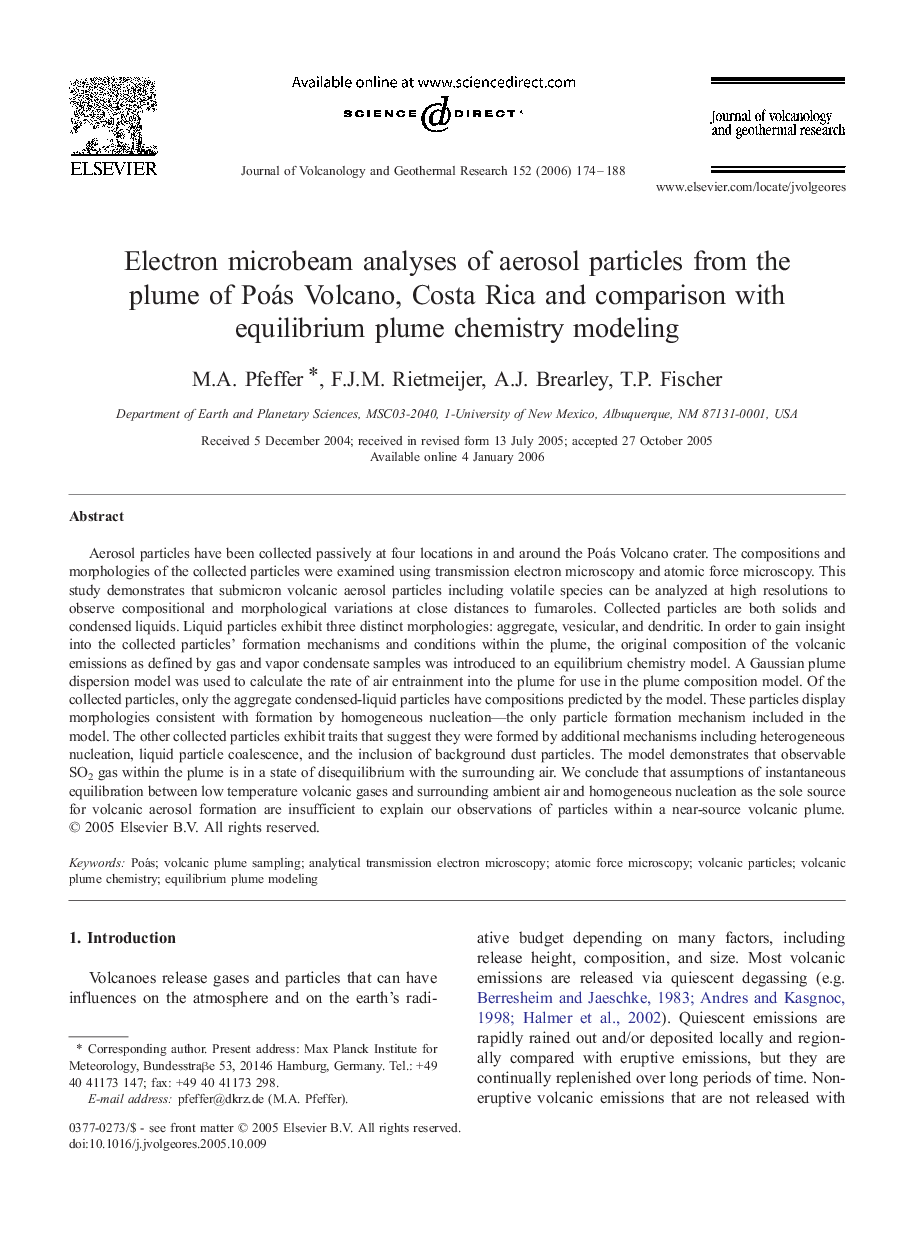| Article ID | Journal | Published Year | Pages | File Type |
|---|---|---|---|---|
| 4715147 | Journal of Volcanology and Geothermal Research | 2006 | 15 Pages |
Aerosol particles have been collected passively at four locations in and around the Poás Volcano crater. The compositions and morphologies of the collected particles were examined using transmission electron microscopy and atomic force microscopy. This study demonstrates that submicron volcanic aerosol particles including volatile species can be analyzed at high resolutions to observe compositional and morphological variations at close distances to fumaroles. Collected particles are both solids and condensed liquids. Liquid particles exhibit three distinct morphologies: aggregate, vesicular, and dendritic. In order to gain insight into the collected particles' formation mechanisms and conditions within the plume, the original composition of the volcanic emissions as defined by gas and vapor condensate samples was introduced to an equilibrium chemistry model. A Gaussian plume dispersion model was used to calculate the rate of air entrainment into the plume for use in the plume composition model. Of the collected particles, only the aggregate condensed-liquid particles have compositions predicted by the model. These particles display morphologies consistent with formation by homogeneous nucleation—the only particle formation mechanism included in the model. The other collected particles exhibit traits that suggest they were formed by additional mechanisms including heterogeneous nucleation, liquid particle coalescence, and the inclusion of background dust particles. The model demonstrates that observable SO2 gas within the plume is in a state of disequilibrium with the surrounding air. We conclude that assumptions of instantaneous equilibration between low temperature volcanic gases and surrounding ambient air and homogeneous nucleation as the sole source for volcanic aerosol formation are insufficient to explain our observations of particles within a near-source volcanic plume.
